Oxidorphines is my journey, as an amateur, into the final breath of ships, into the rust that clings to their skin and the stories that sink with them. It is not merely a portrayal of a ship graveyard in Chittagong, Bangladesh, but my visual testimony of transformation—from grandeur to dismantling, from utility to discard. Amidst the scrap and sweat, between corroded steel and hardened hands, I tried to capture the clash between the poetry of the sea and the stark reality of deconstruction.
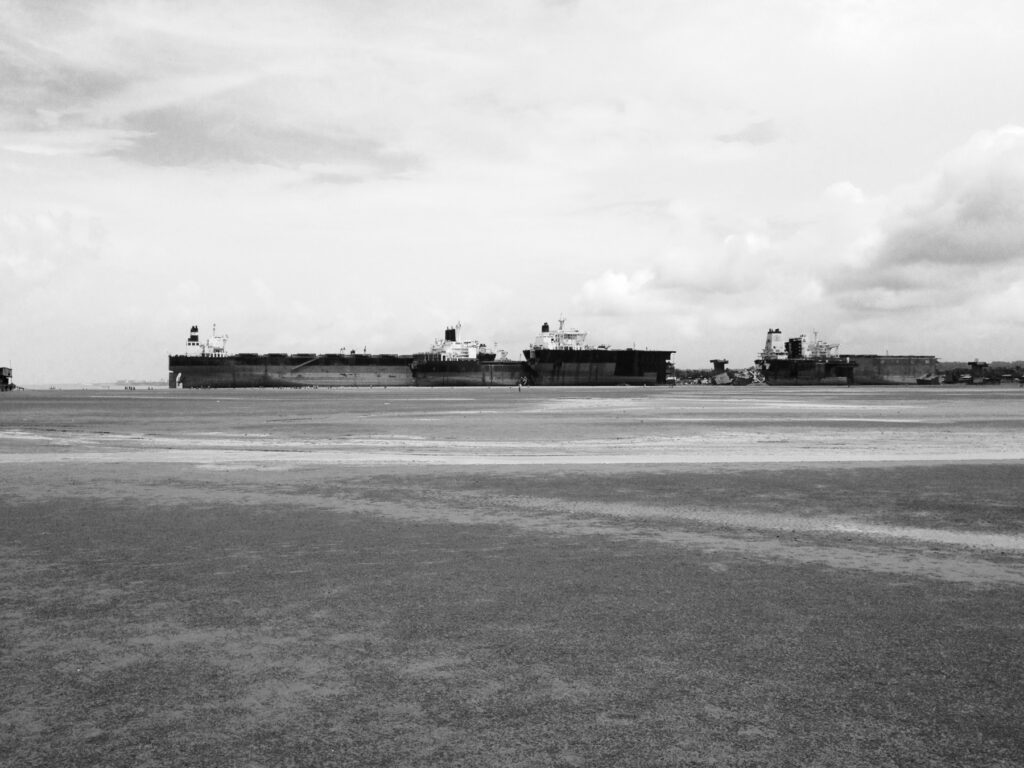
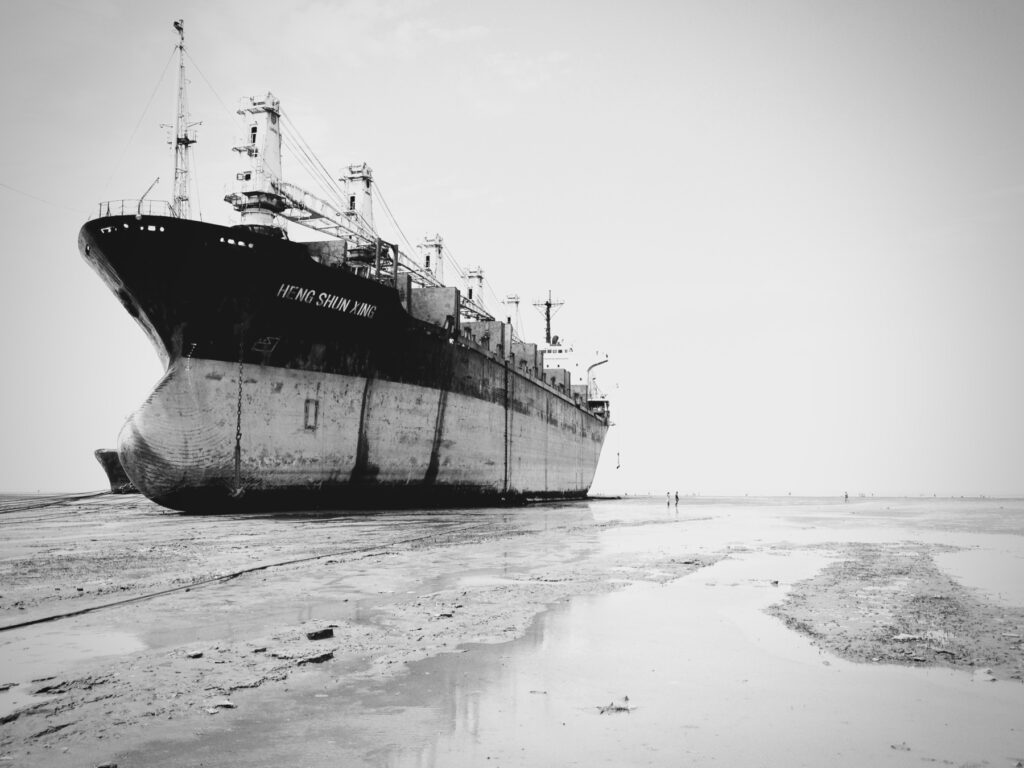
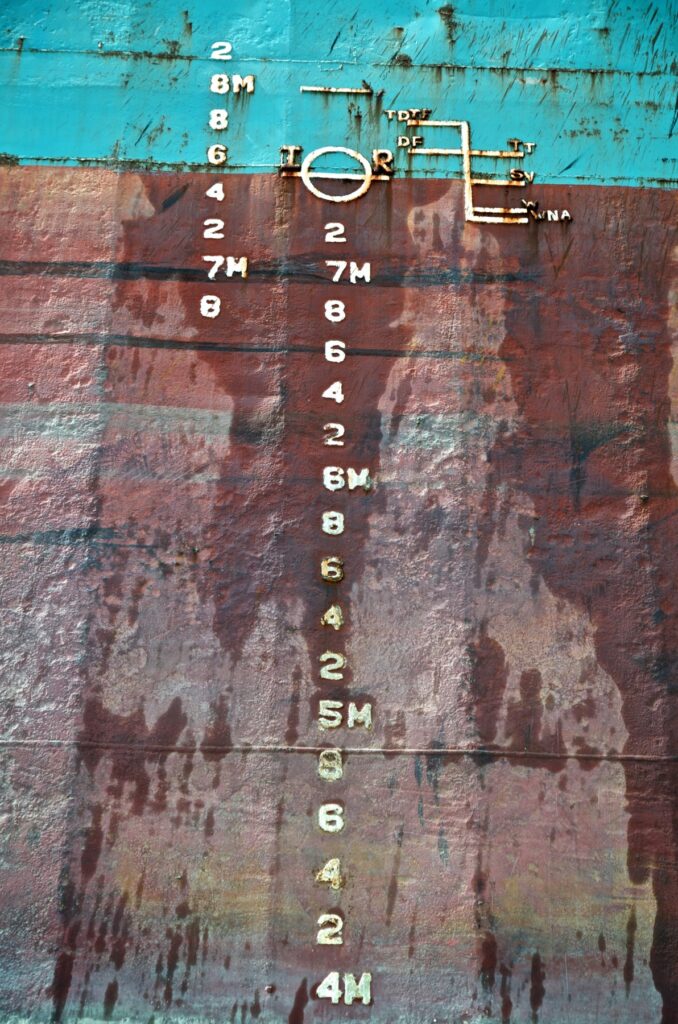

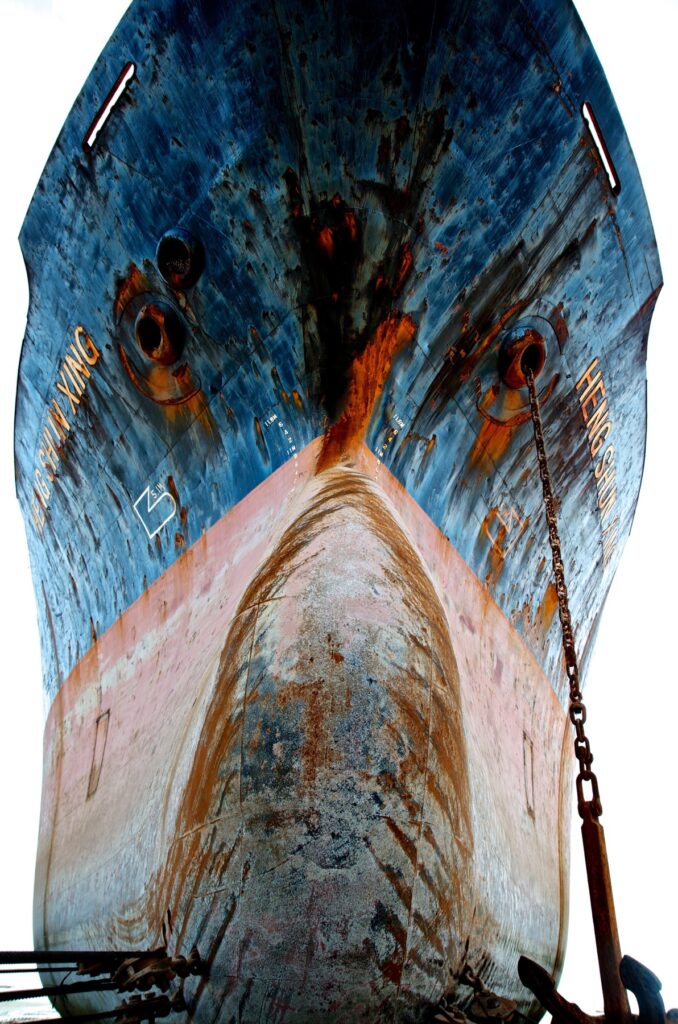
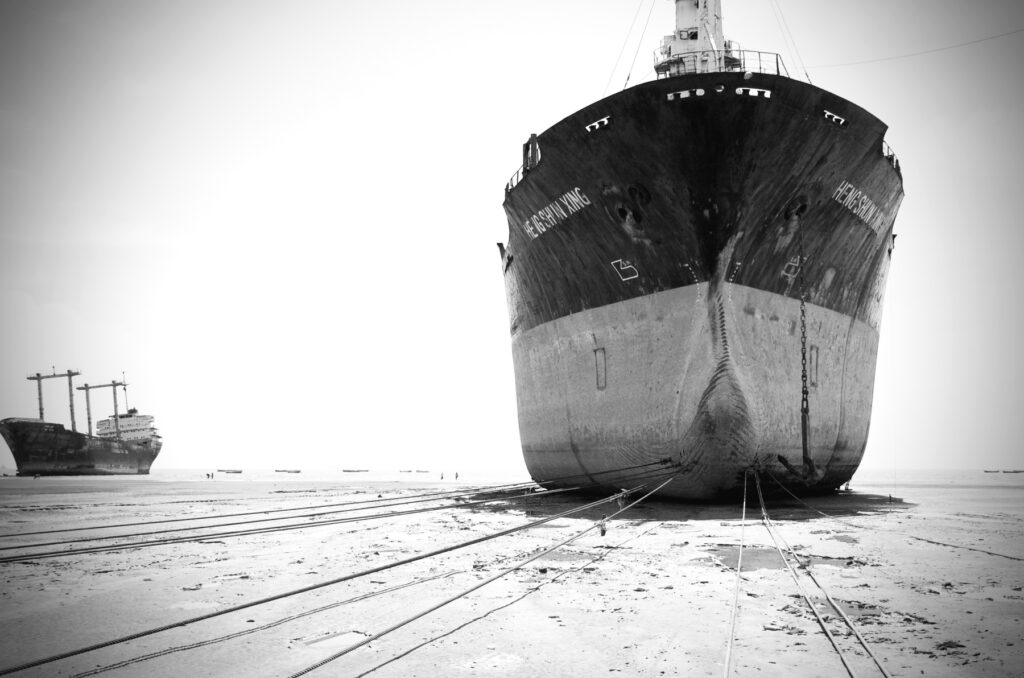
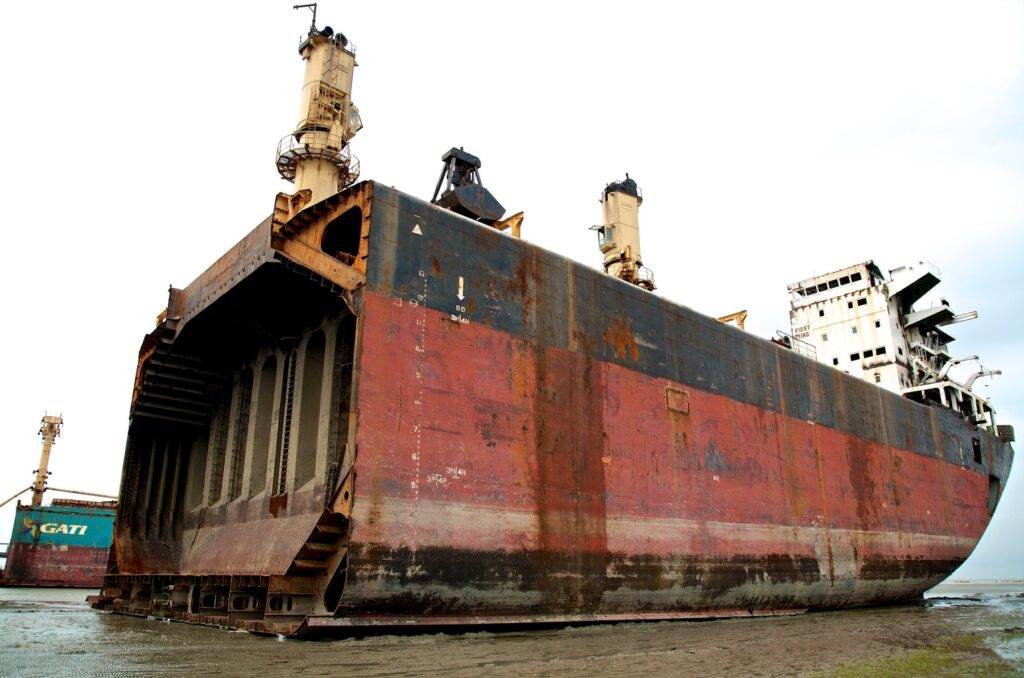
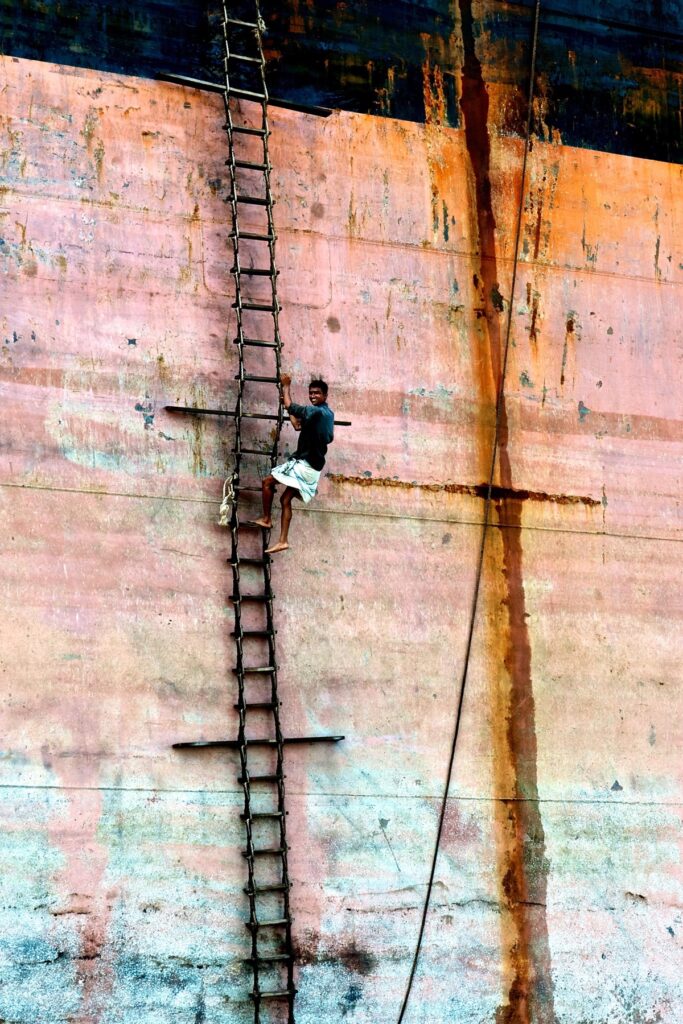
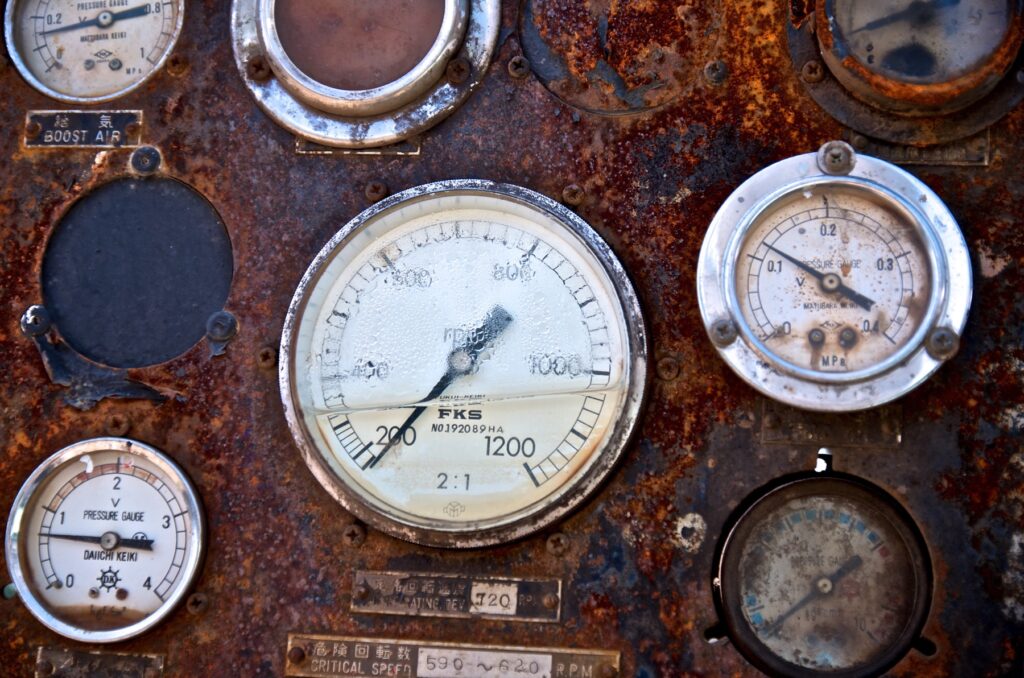
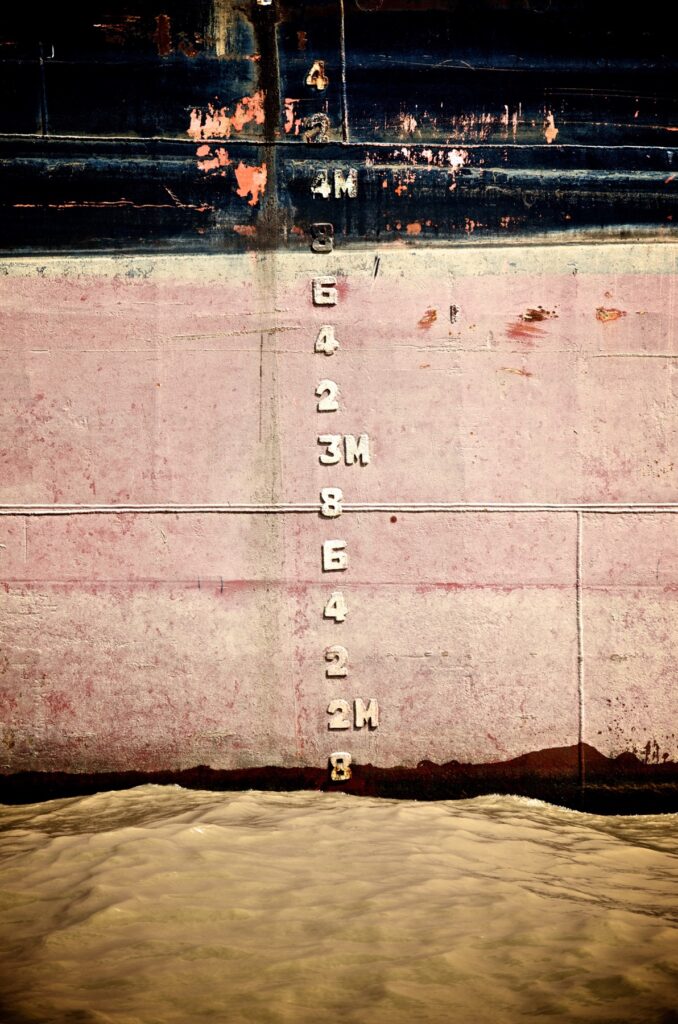
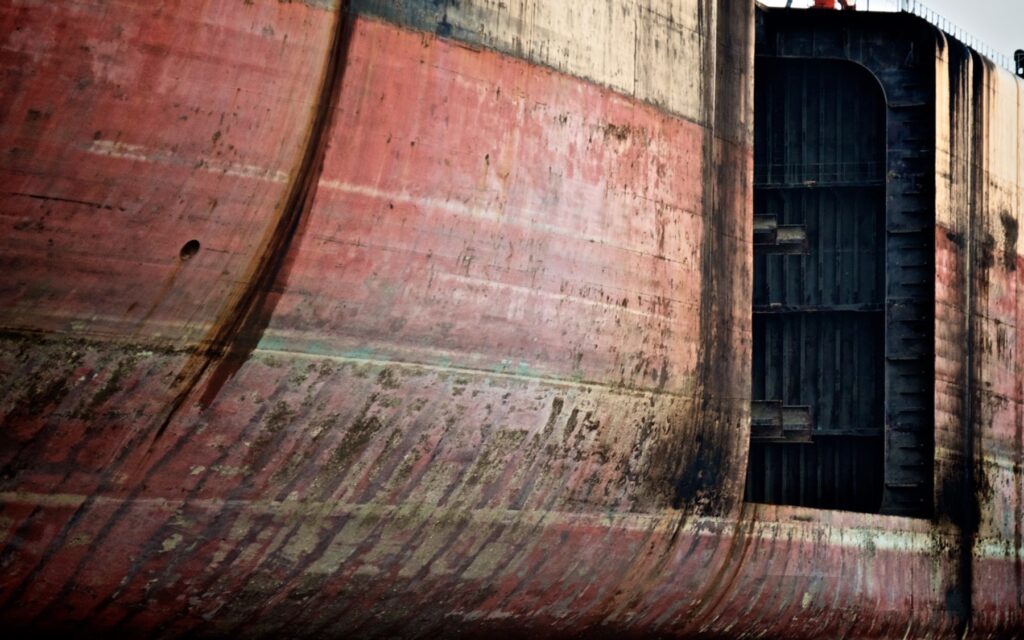
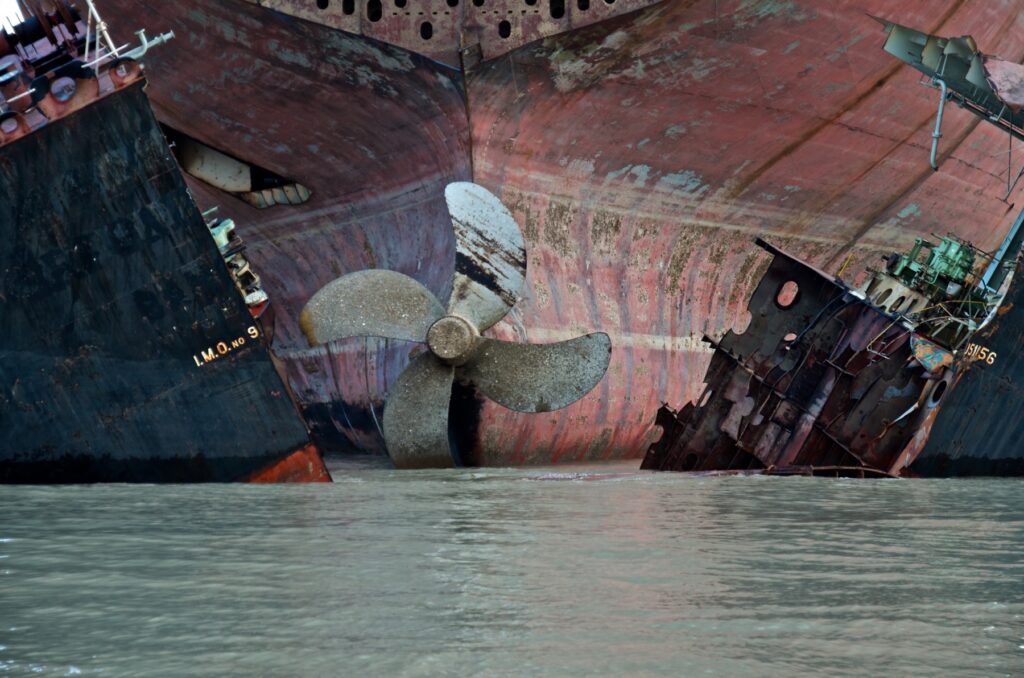
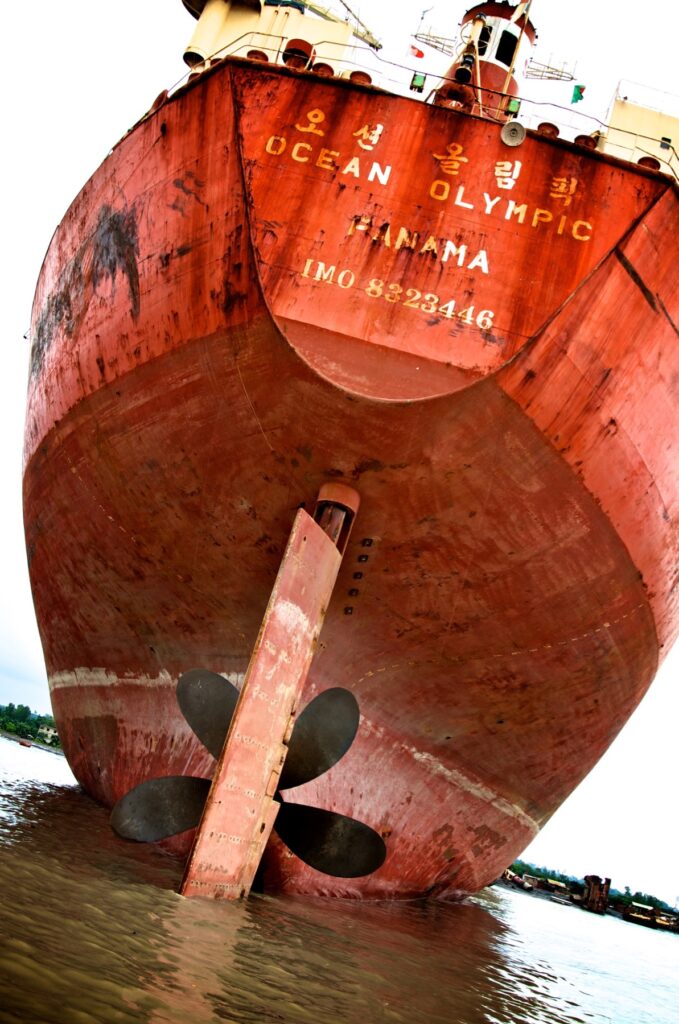
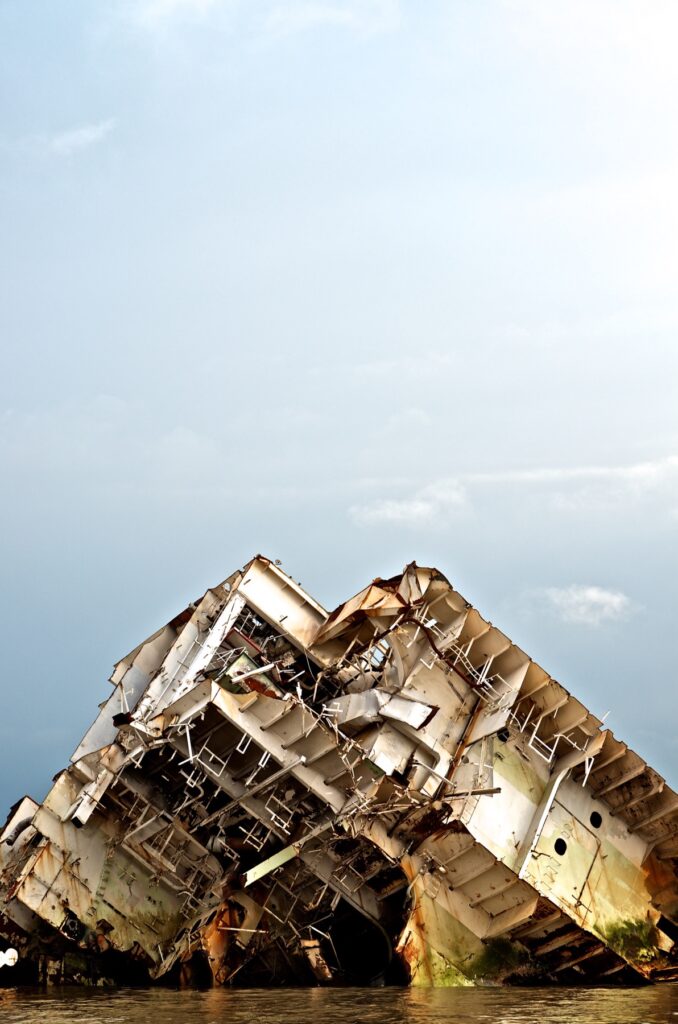

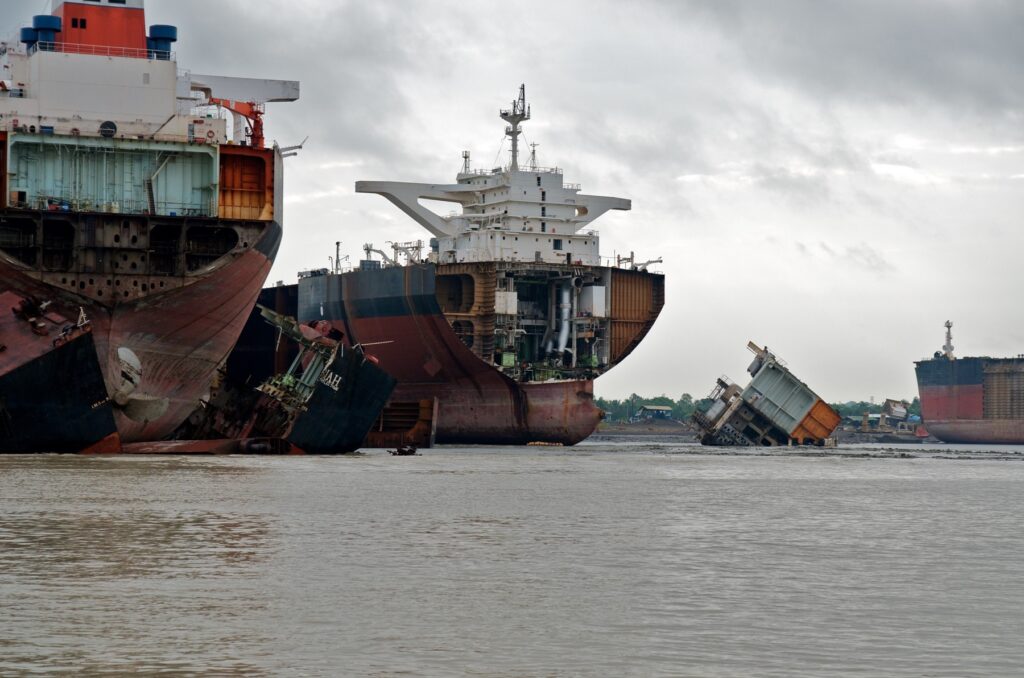
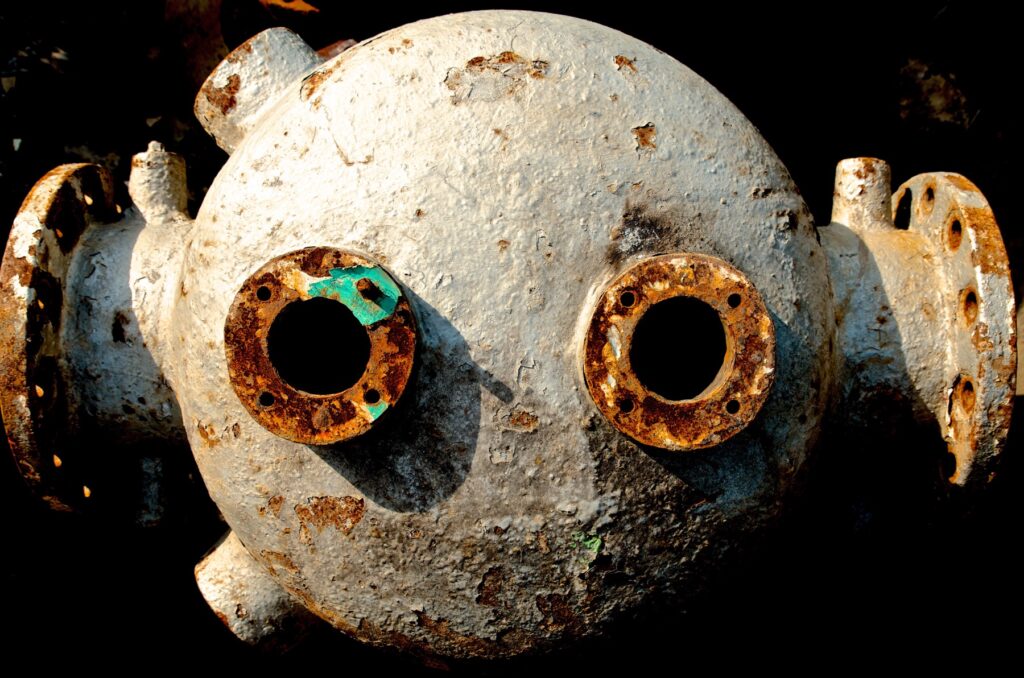
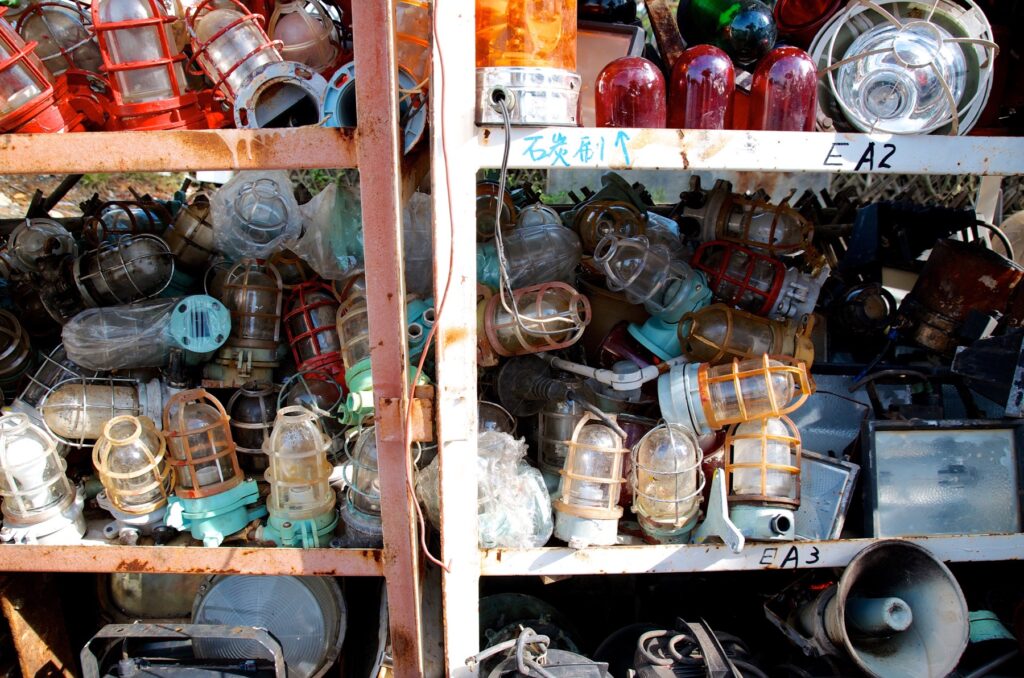
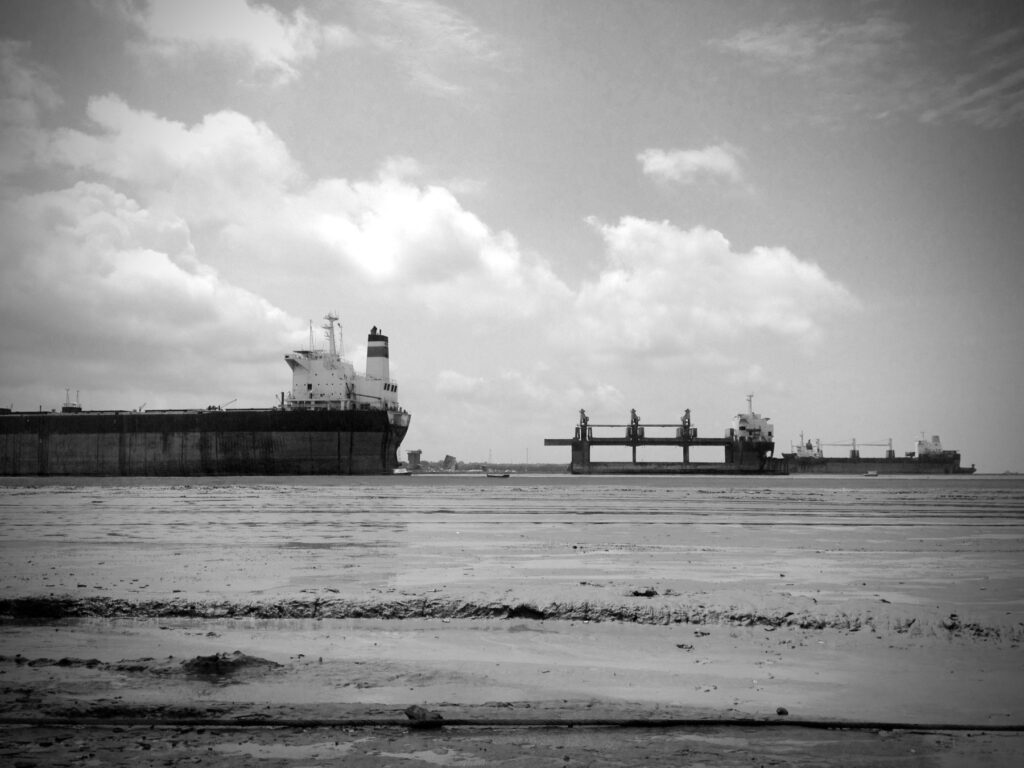
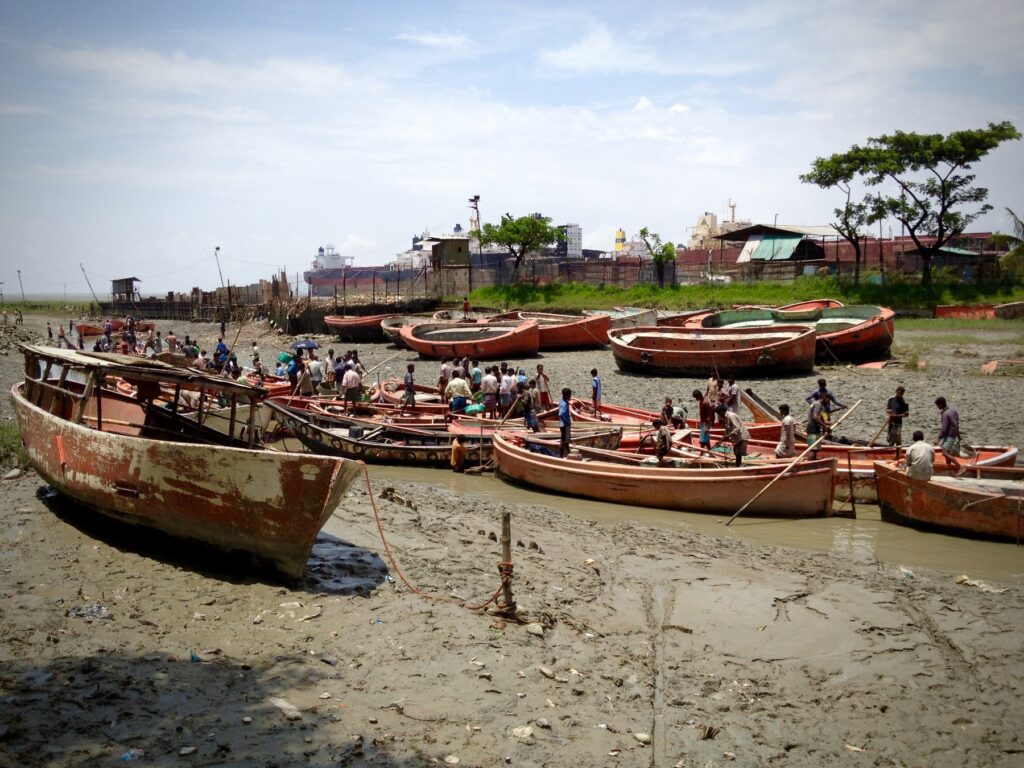
This work is neither a protest nor a technical chronicle, but an aesthetic immersion into the decaying beauty of corrosion, into the imprint that time and human toil leave on every stranded hull. Photography as an addiction to decomposition, to the texture of the ephemeral.
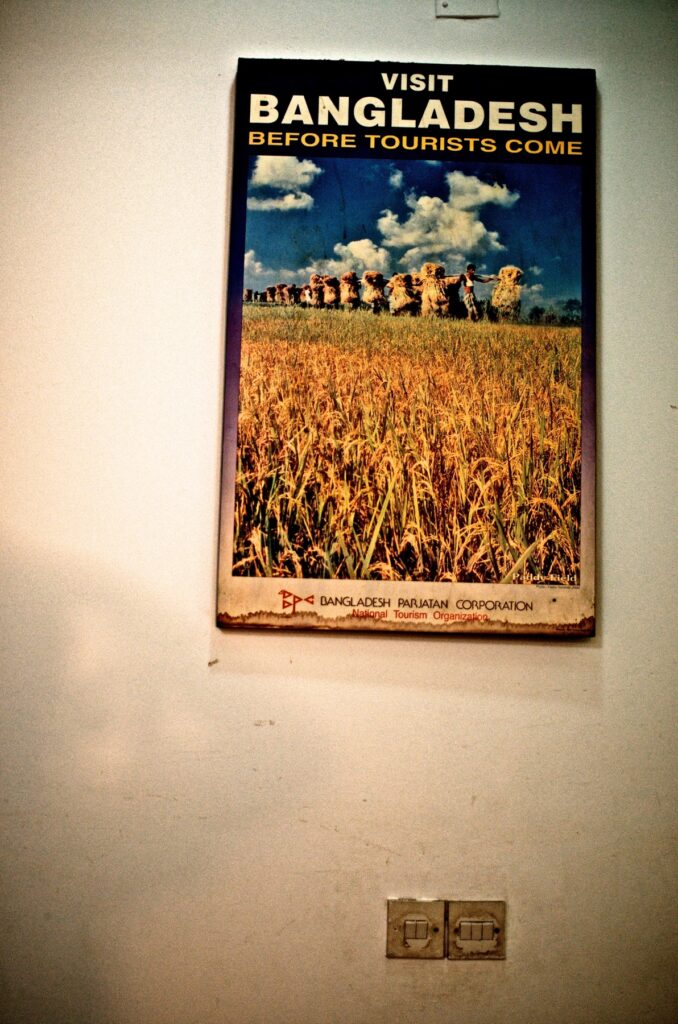
A picture is worth a thousand words, but a thousand words can be worth more than a good picture. These notes are my logbook navigating these beaches, my travel log:
From its nest, the seagull takes off over the sea. From the shipyard, the vessel sets sail. Everything tastes of salt. The salt of life, the salt of death.
To launch, to hoist, to depart, to sail, to weather the storm, to board, to dock…A ship always carries the emotional weight of a journey toward the horizon, rocked by waves. Whether carrying people, treasure, or trade, every ship bears the significance of its voyage. Iodine drifts in the air, sea spray weaves into tangled hair flowing in the wind. A maritime symphony whispers all around.
But many ships don’t reach a dignified end. After 20 or 30 years riding the waves, they’re cast aside, pushed to die like abandoned animals, left to scavengers. Bound for slaughter.
Some places in the world have become their graveyards. And the locals—made their executioners. But this isn’t Père Lachaise in Paris. No Balzac, Camus, Chopin, Oscar Wilde, or Jim Morrison lie here. Instead, ships bear flags of convenience—fiscal loopholes, legal evasions, flags with no country.
There is no grey bin for maritime waste. No final place where all things belong. They simply end. Nowhere.
Eid Mubarak. August 2012. Chittagong, Bangladesh.
A northern “still life” made of open-air scrap. These shores should be erased from nautical charts, kept beyond the reach of any compass or bearing. The poetry of the sea ends here. The carnage begins. No blood is spilled—only oil, diesel, and thick, contaminating fluids.
Dignity slips through the scuppers. Humiliation pools in the bilges at the end of this tragic journey. Paints, heavy metals, asbestos—A corrosive cocktail you won’t find on a Mediterranean cruise. There will be no dinner at the captain’s table tonight.
No necks are cut, but every part of the ship is dismantled—hull to deck, cabins to engine room, even the prized bridge, where only hours before the horizon was scanned from a privileged perch. The swords and guillotines of old revolutions are now acetylene torches and cutting saws.
A metallic roar. No siren songs here—just horns of iron pain.
Tons of steel are fed into the maw of shredders. As far as the eye can see, rusted carcasses marooned at low tide. No longer sand, but rare metals of another periodic table. Human termites gnaw at metal, wood, plastic, rope.
Dusk falls on the “unshipyard” of cruise liners, cargo ships, and freighters. Floodlights flicker on. Stripped of rest, the pillaging continues—plates, bolts, no loose ends. In three to six months, the vessel is no more.
A ship scrapped in three or four months in Bangladesh nets a million dollars in return—on a five-million-dollar investment.
And yet, this apocalyptic landscape seduces. It releases photographic endorphins. The eye, the camera’s viewfinder—both tint crimson under a leaden sky.
Steel skeletons run aground in rhythm with the tides. Swarms rush port and starboard, scrambling for the best loot—not astrolabes or sextants, but lifeboats, portholes, wires, propellers, spark plugs, pistons, lamps, sensors, sonar, radar, GPS. All of it cloaked in raw rust.
Rust merchants. Steel auctions. Everything is for sale. Even souls. Recycling without activism—just a euphemism. Melted down, but not damned.
Some pieces will sail again—aboard new vessels, or hanging in chic homes and restaurants. Better that than being left to rot on a deserted beach after a failed escape from a cyclone. Such is the cycle of the sea. Knots and nautical miles become cubic meters of waste and steel.
Personal stories cling to these corroded remains. Like that of Hossain Khatun. A Bengali man, generations deep, rooted in toxic mud. His descendants likely will be too. There’s no way out, unless you swim—to nowhere. His grandson Kamal, 14, walks him to the shoreline each day as the fishermen return. If the tide’s low, they can get closer. Hossain is 64 and blind. Kamal guides his arm so he can stretch his hand toward the fishermen and beg.
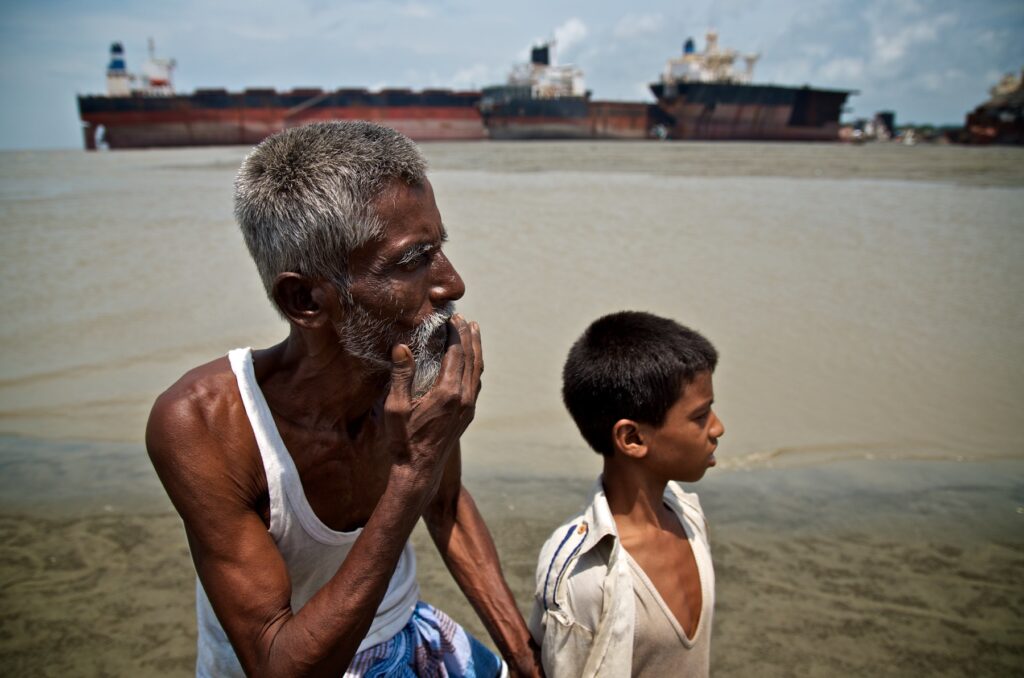
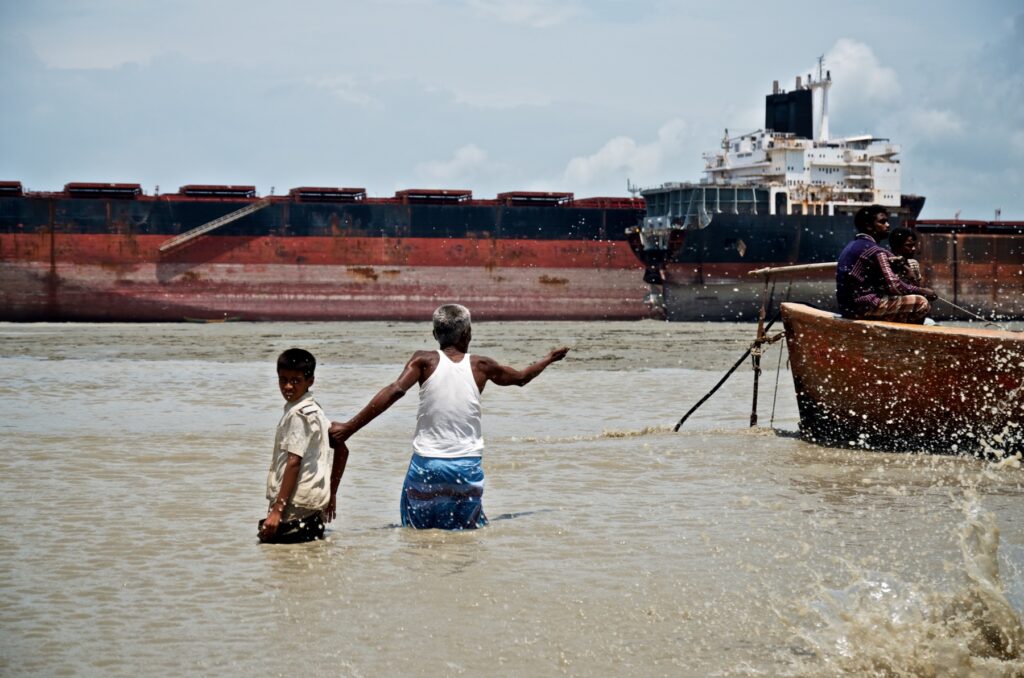

Kamal has spent nearly all his life working in the yards. The toxicity took his vision. Hossain is on the same path—unless he’s hurt first (they use the blind to crawl into dangerous crevices of the ships), or unless he tries to swim away… To earn a plate of rice or dhal, they cut through plates of steel. They travel from Panchariya to Faujdarhat—almost 20 km of sandy graveyard. No insurance. No safety gear.
Roughly 200,000 souls live trapped like fish in a stagnant pond. Over 80 yards compete for the dying. But the rust—captivates. That’s why I went there. I was not the first one, I know, but I wanted to see it my may.
Nearly one in five of the world’s aging ships end up here. Many NGOs have reported the working and environmental conditions. That ship lamp from the Singaporean vessel “Green Earth” will look lovely somewhere. It’s docked in port now, set to sail for Malaysia tomorrow.
How strange that so much decay can be so visually fascinating. Corrosion addiction could be the title of this landscape.
Thankfully, my memories are rusting. Only images remain. Another contradiction.
Anchored in rust, one becomes a witness to one of the most extreme forms of circular economy—a cycle both toxic and hauntingly poetic.
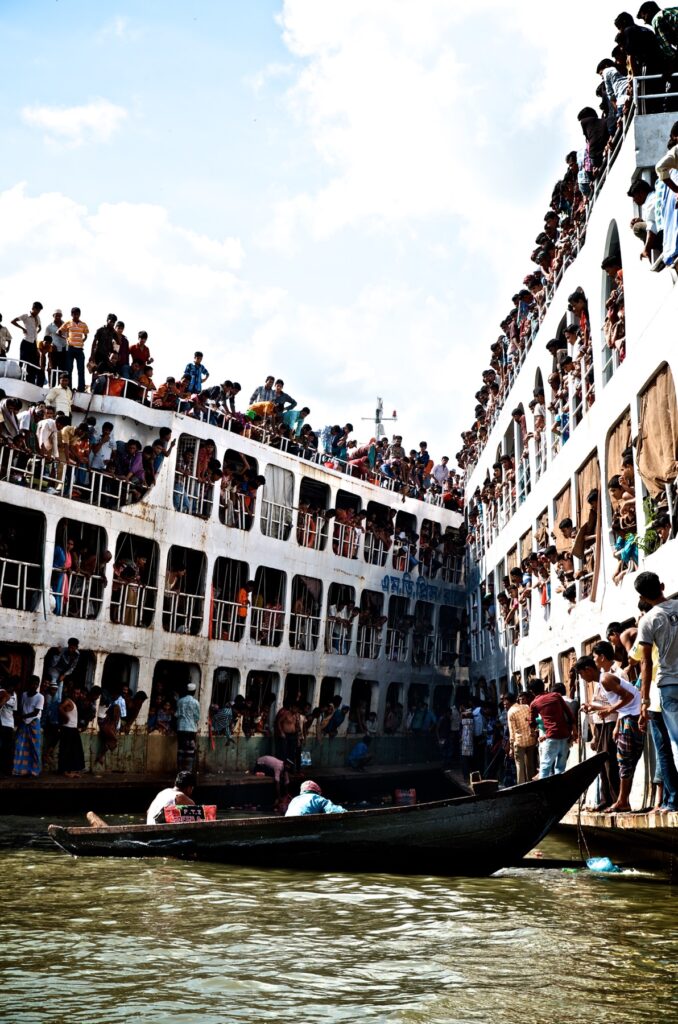
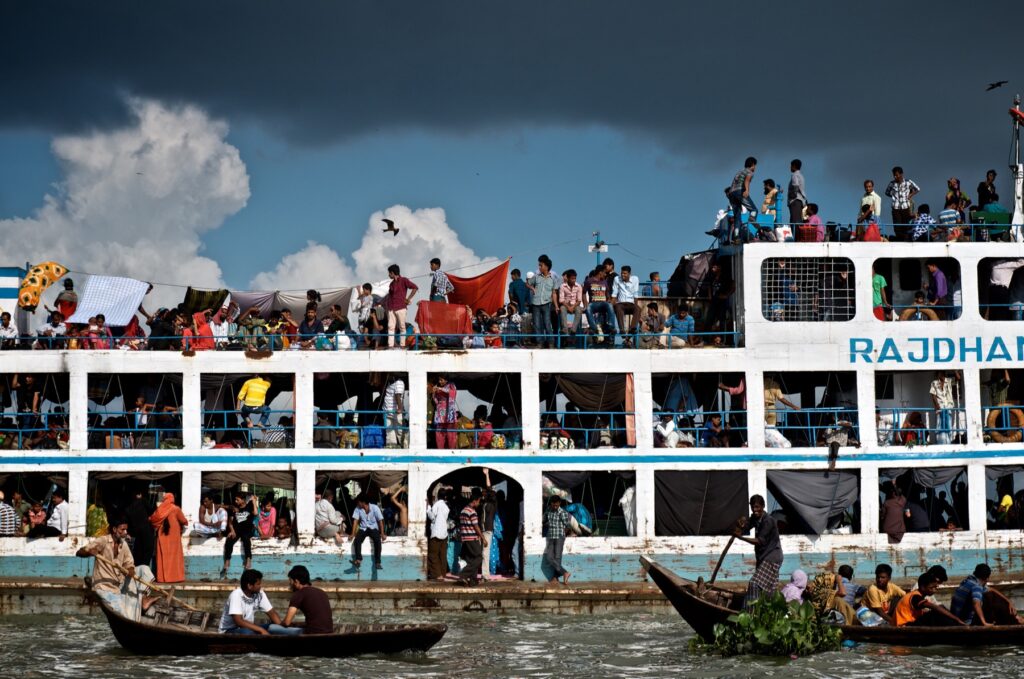
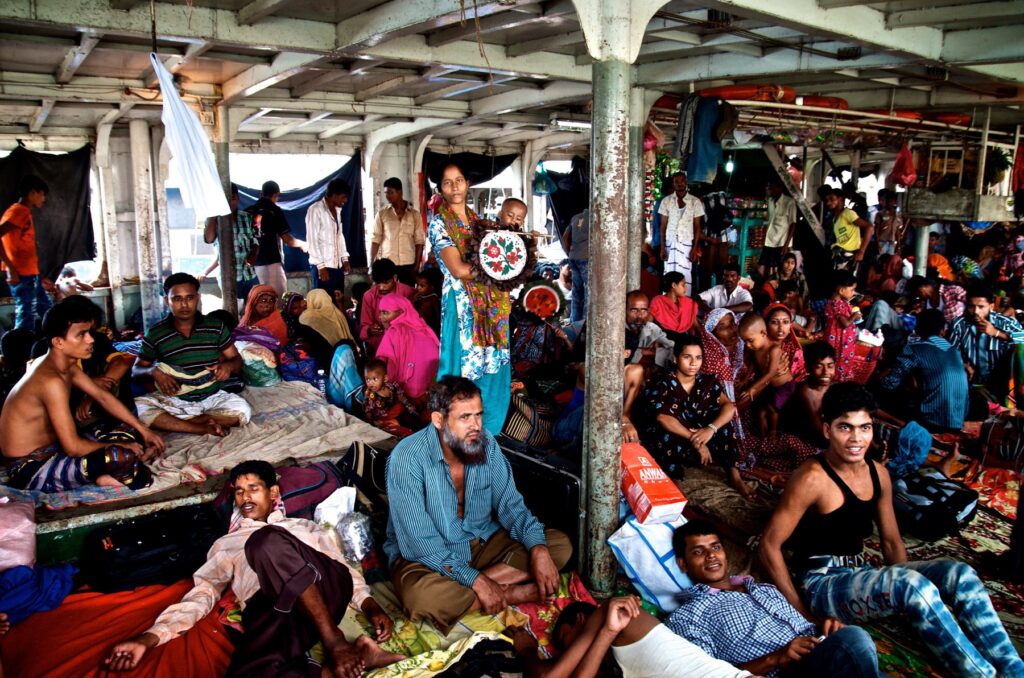
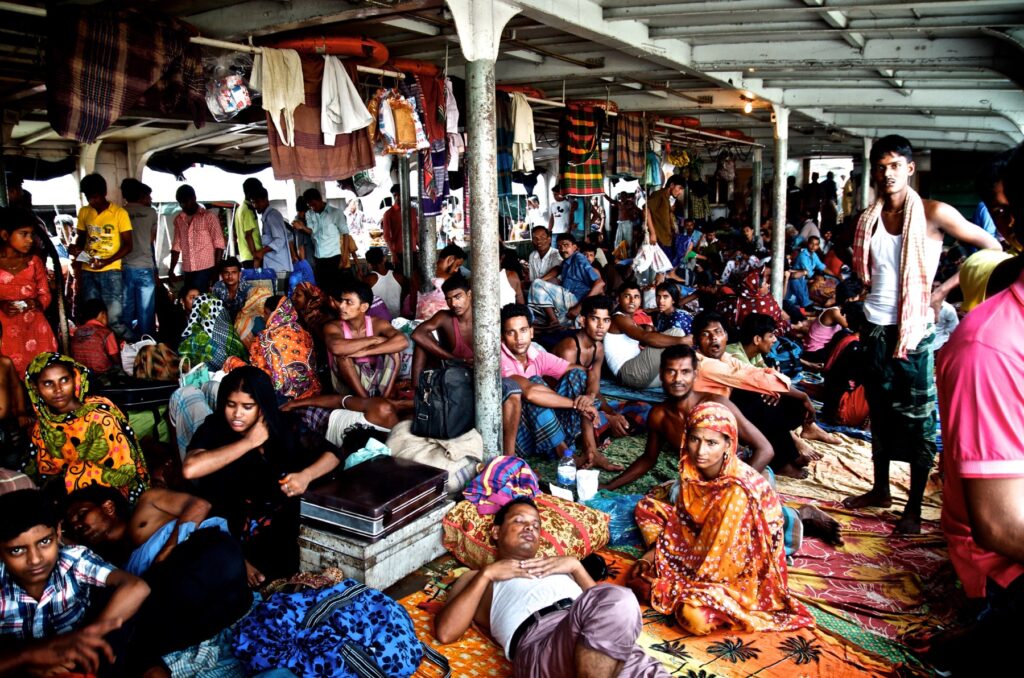
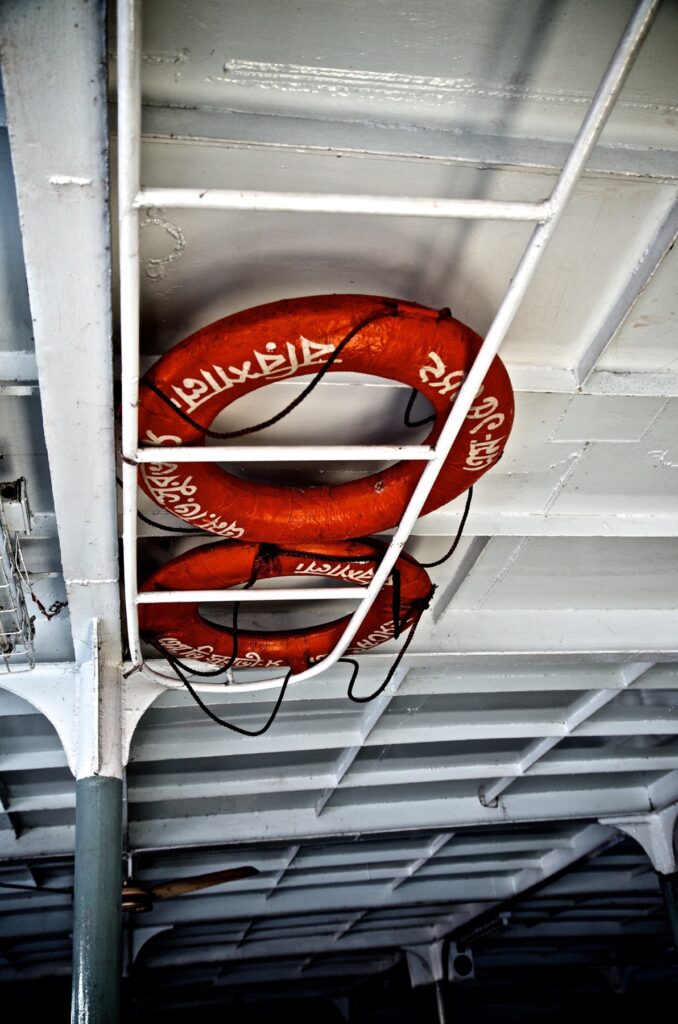
Last but not least, the rails of the railroad tracks in Bangladesh are like rivers full of life to the desolation.
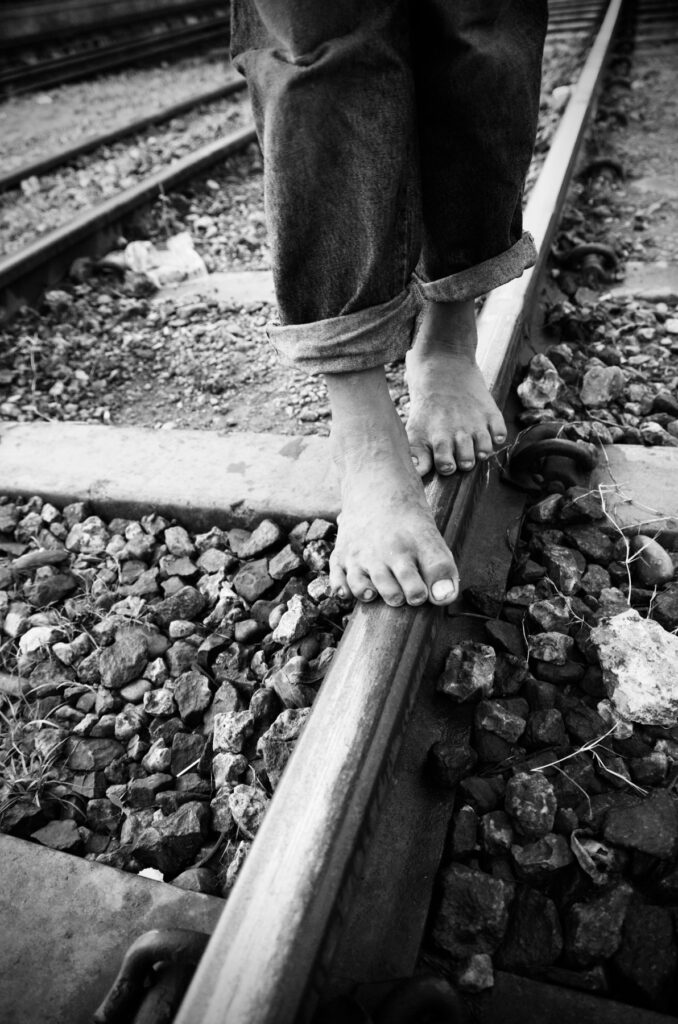
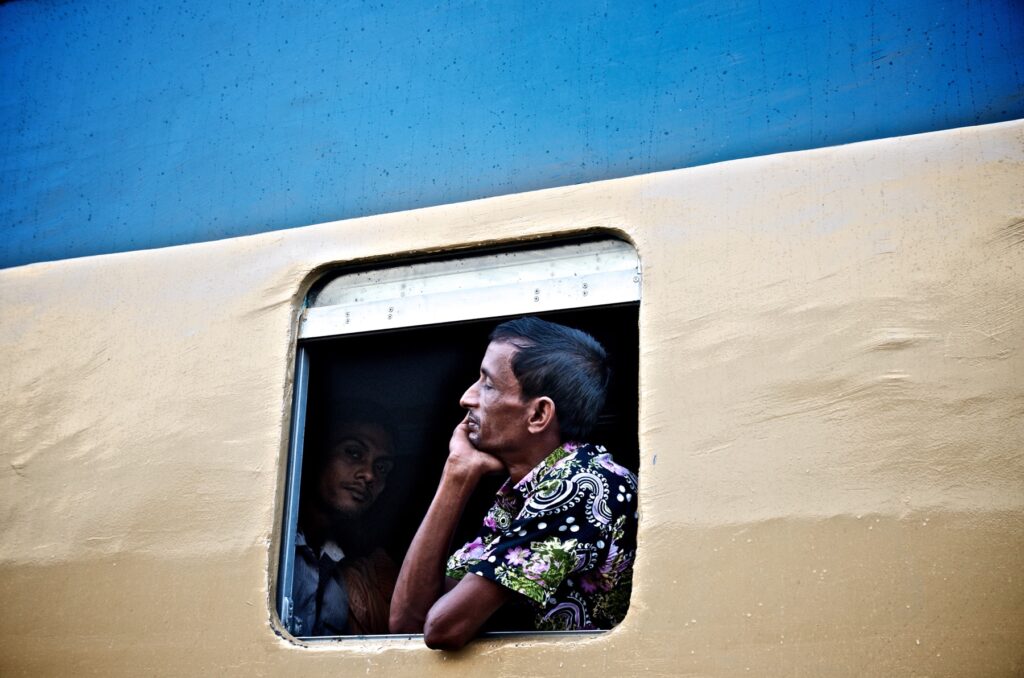


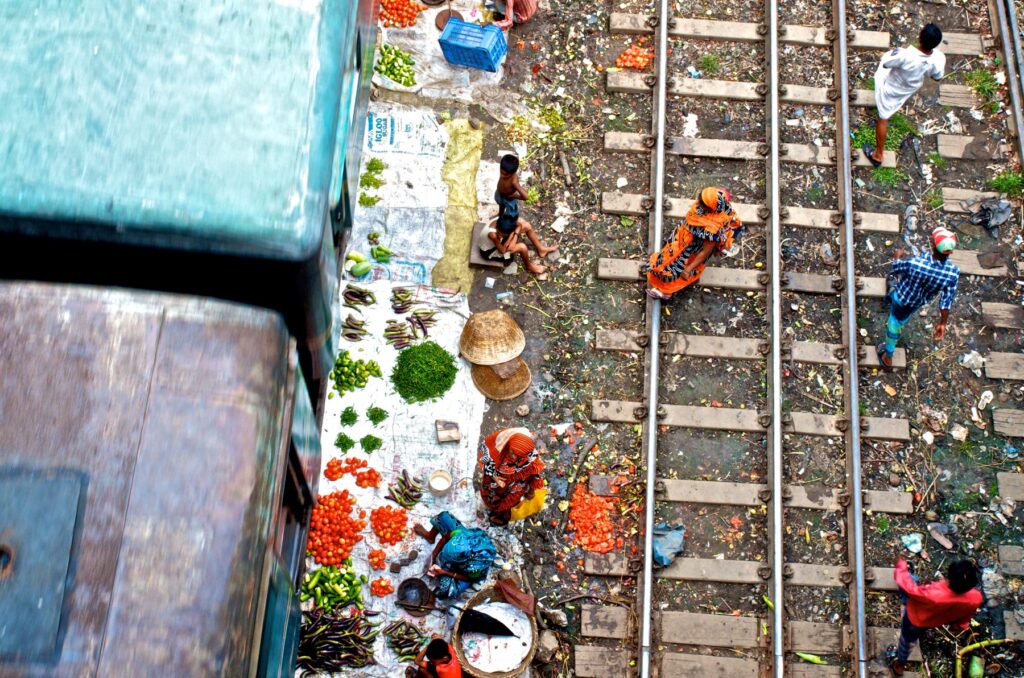
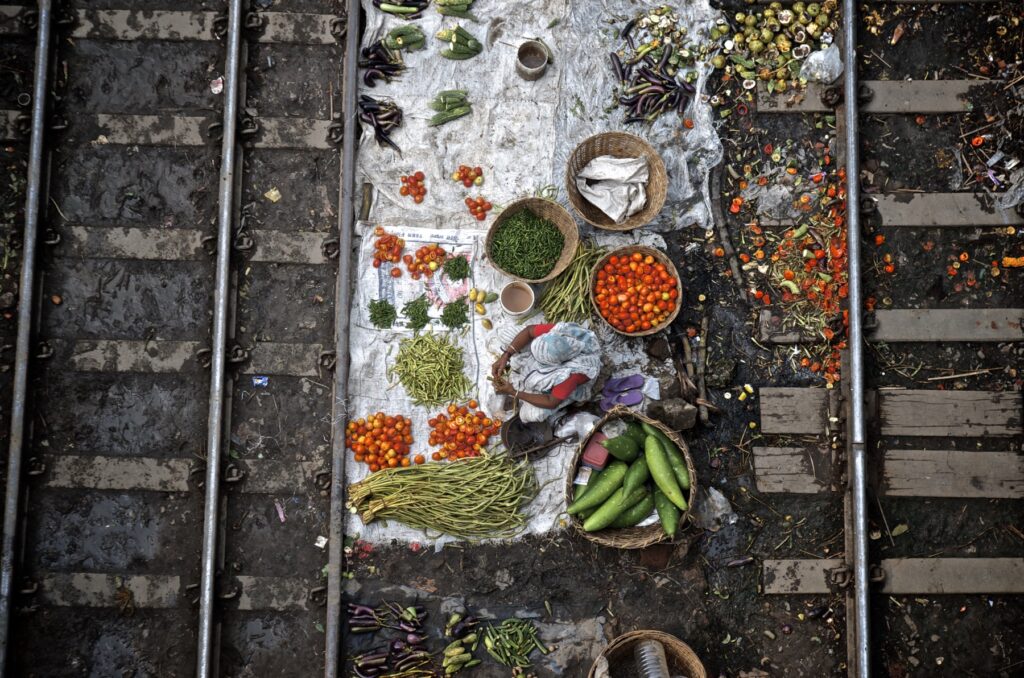
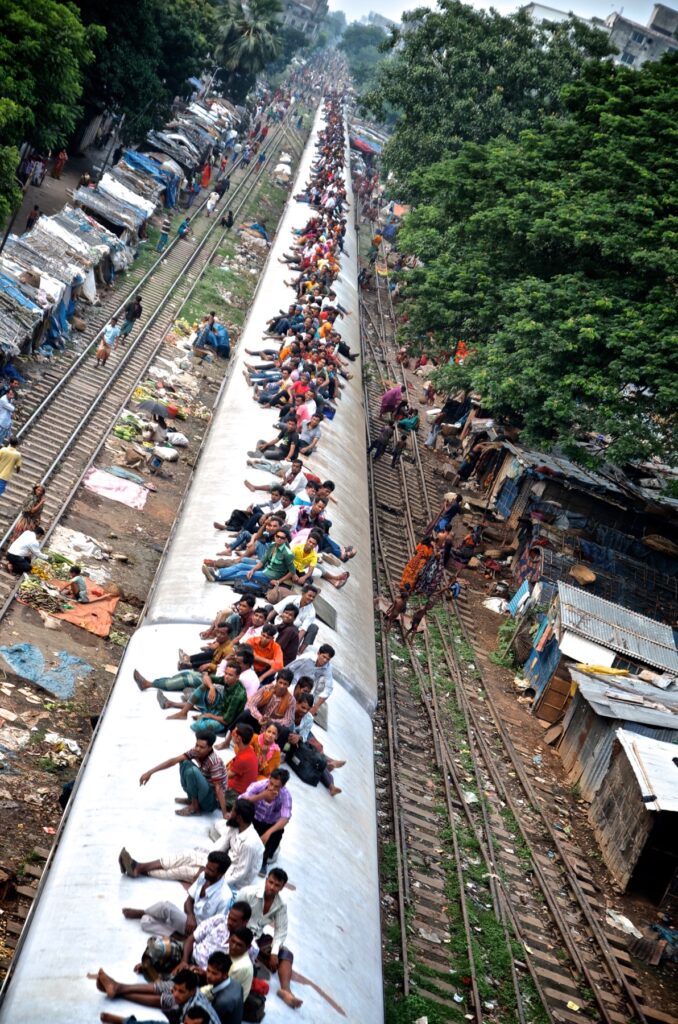
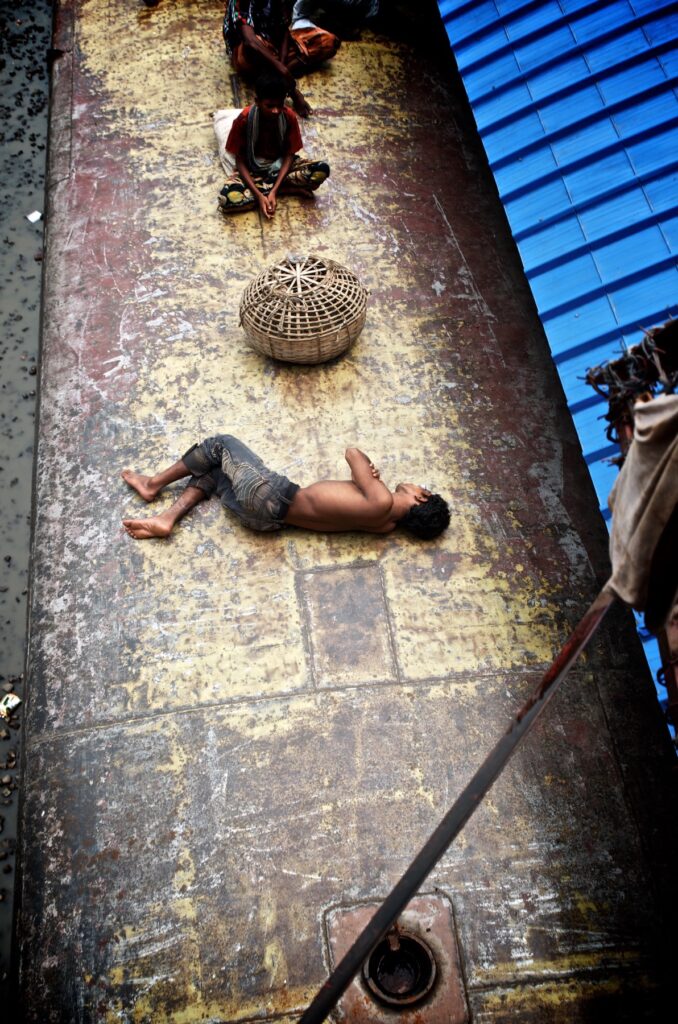
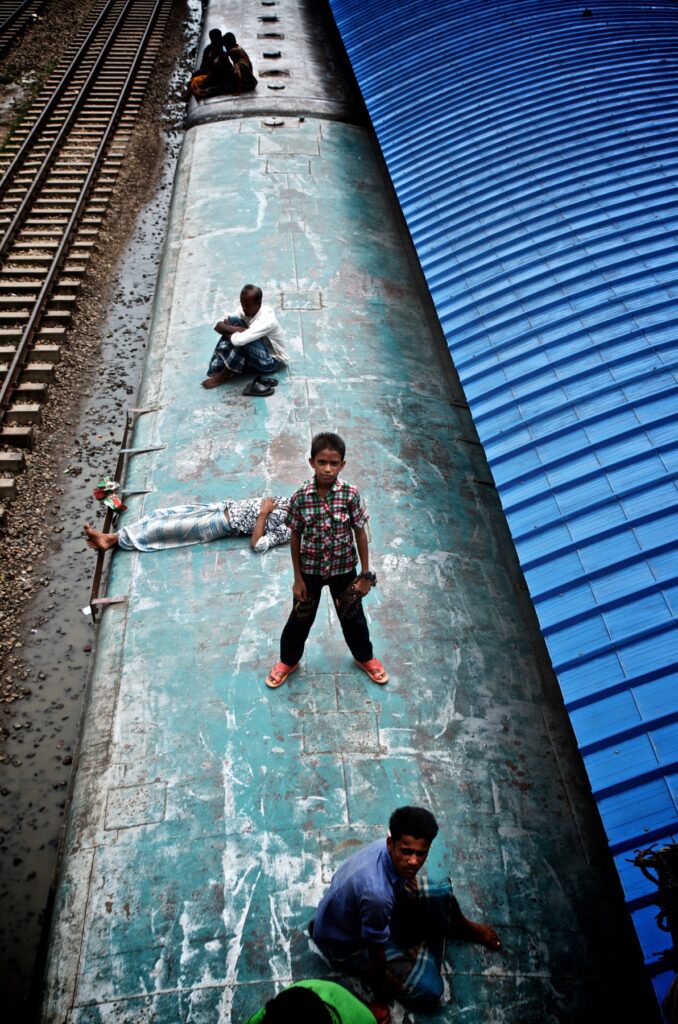
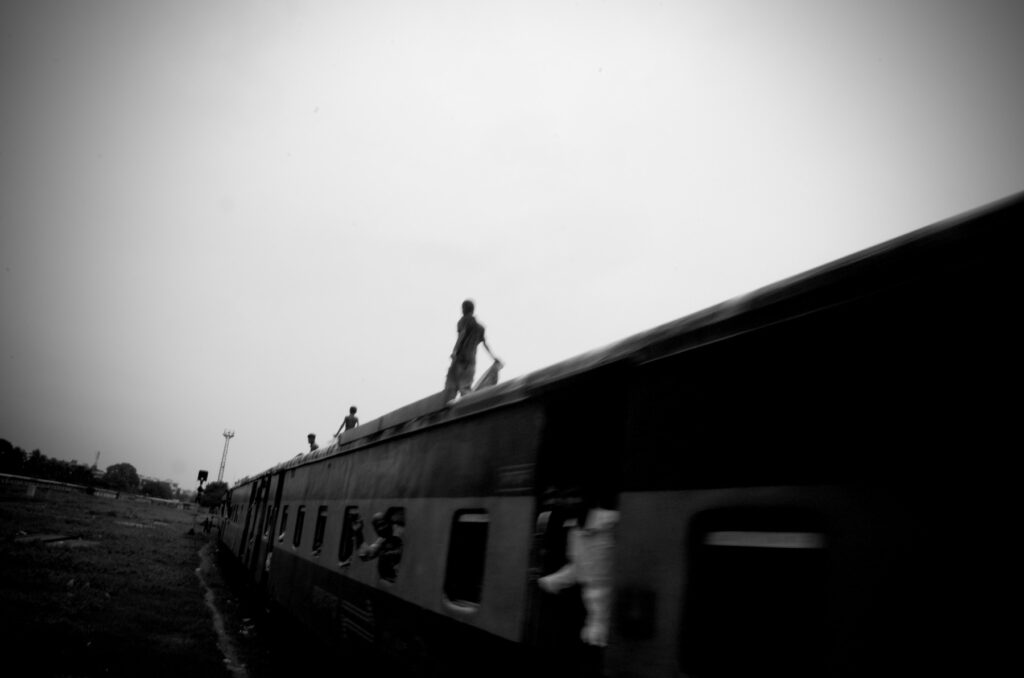
Thank you. More on Instagram
Share this post:
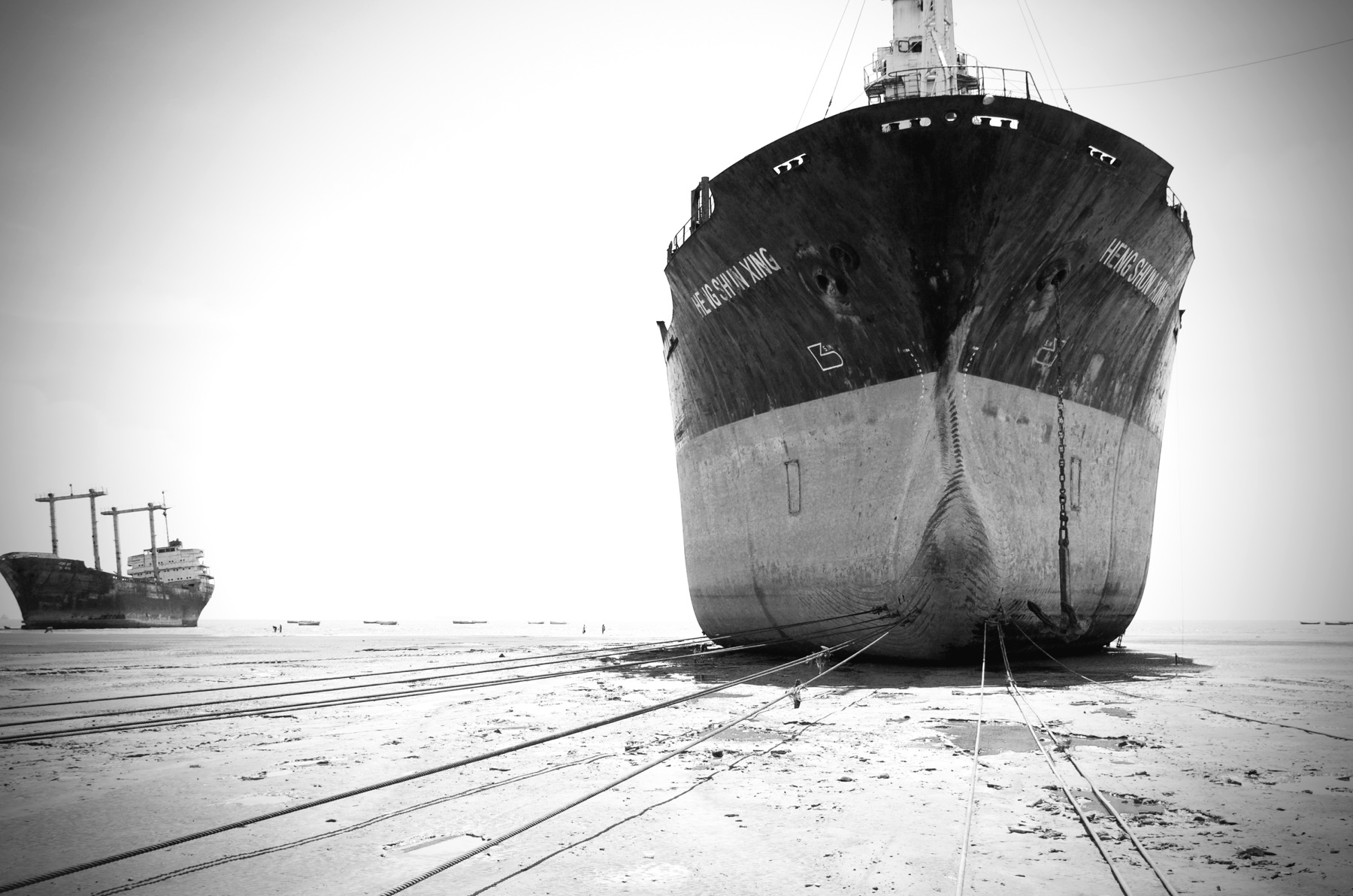
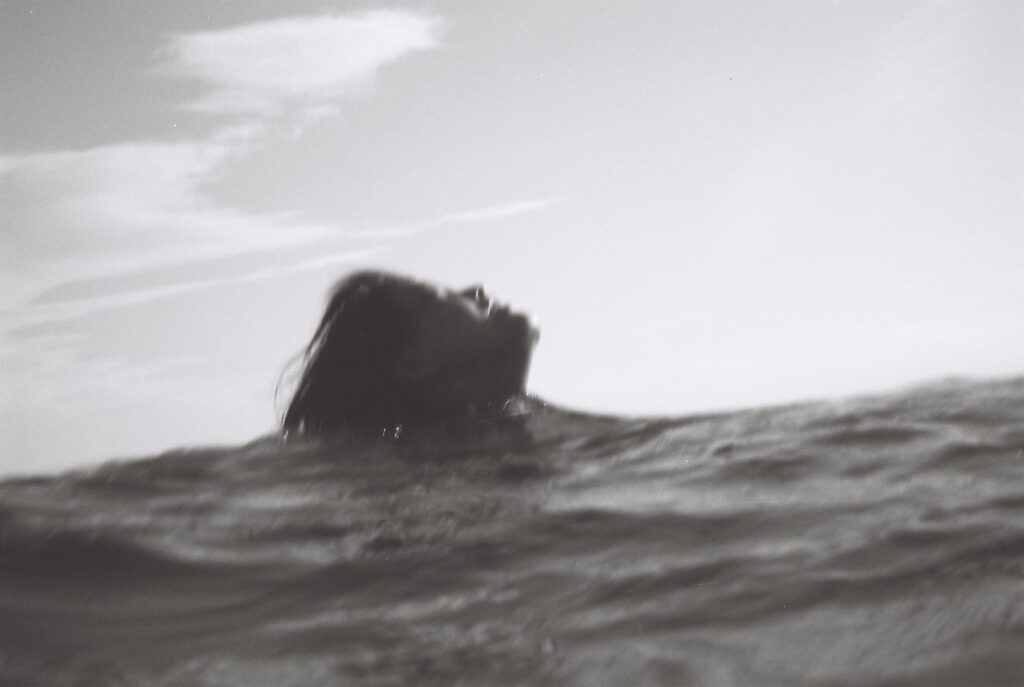
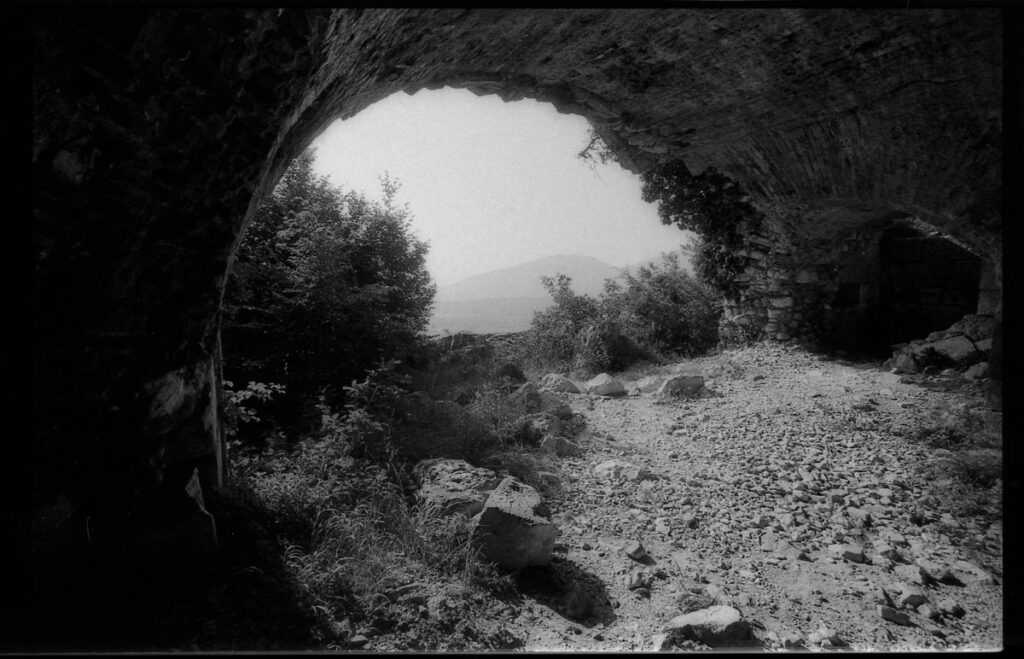






Comments
Ibraar Hussain on Oxidorphines – the decaying beauty of corrosion
Comment posted: 10/05/2025
Best viewed on a large screen!
Thanks you
Bill Brown on Oxidorphines – the decaying beauty of corrosion
Comment posted: 10/05/2025
CHRISTOF RAMPITSCH on Oxidorphines – the decaying beauty of corrosion
Comment posted: 10/05/2025
Curtis Heikkinen on Oxidorphines – the decaying beauty of corrosion
Comment posted: 10/05/2025
Miguel Mendez on Oxidorphines – the decaying beauty of corrosion
Comment posted: 10/05/2025
Gary Smith on Oxidorphines – the decaying beauty of corrosion
Comment posted: 10/05/2025
Geoff Chaplin on Oxidorphines – the decaying beauty of corrosion
Comment posted: 10/05/2025
Jeffery Luhn on Oxidorphines – the decaying beauty of corrosion
Comment posted: 10/05/2025
That's the most powerful photo essay I've seen and read on this platform. Stunning, heartbreaking, intriguing, and many other words ending in 'ing.' In a weird way, it's a (human) macro of ants eating a carcass. No, that's not right. I can't think of a way to describe your work and that's what makes it a terrific photojournalistic piece. Thank you for posting it. Jefferty Luhn
Tony Warren on Oxidorphines – the decaying beauty of corrosion
Comment posted: 10/05/2025
Comment posted: 10/05/2025
David Garcia on Oxidorphines – the decaying beauty of corrosion
Comment posted: 11/05/2025
Scott Ferguson on Oxidorphines – the decaying beauty of corrosion
Comment posted: 11/05/2025
This is an awesome post and beautifully shot and written. Thank you for sharing your extraordinary experience and perspective with us. I have a few shots of some derelict ships on the Brooklyn waterfront taken through a chain link fence, but nothing like the dramatic angles that you have achieved here. Awesome, literally. Thank you for bearing witness.
Daniel Castelli on Oxidorphines – the decaying beauty of corrosion
Comment posted: 11/05/2025
BRUNO SAGUER on Oxidorphines – the decaying beauty of corrosion
Comment posted: 11/05/2025
Keith Shearon on Oxidorphines – the decaying beauty of corrosion
Comment posted: 12/05/2025
Eagle Omomuro on Oxidorphines – the decaying beauty of corrosion
Comment posted: 12/05/2025
Russ Rosener on Oxidorphines – the decaying beauty of corrosion
Comment posted: 12/05/2025
Leonel Leyva C on Oxidorphines – the decaying beauty of corrosion
Comment posted: 14/05/2025
Tell us more: Where do those trains go? What do they do with the steel and scrap materials? What do these people do for a living? This all looks very interesting.
I'd really like to know what techniques you use to take your images and the equipment you use. Do you also use film or only digital?
Thanks for sharing your images!
Matias on Oxidorphines – the decaying beauty of corrosion
Comment posted: 14/05/2025
Il est un très grand photographe!!!!!!!!!!!!!!!!!!!!!!!!!!!!!!!
Scott Gitlin on Oxidorphines – the decaying beauty of corrosion
Comment posted: 14/05/2025